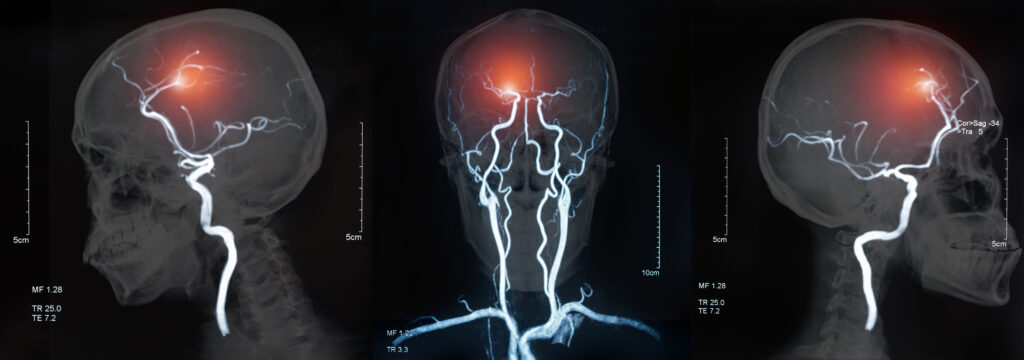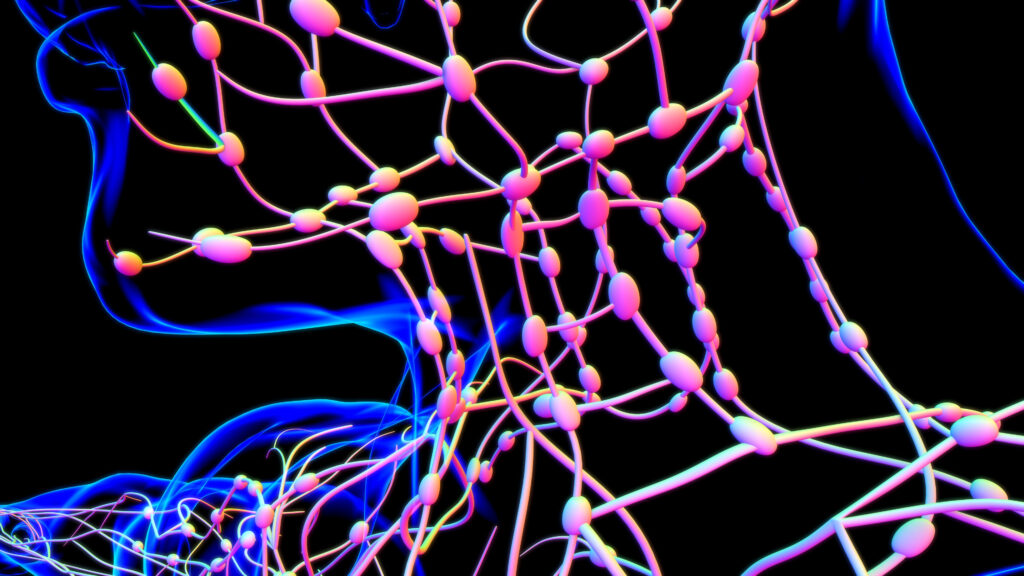A recurrent stroke occurs when a person experiences a second stroke after their initial stroke. A person’s quality of life may be significantly impacted by experiencing one.
A recurrent stroke is one that occurs again and again. A 2017 study found that of the 800,000 strokes that happen each year in the United States, over one-fourth are recurrent strokes.
A stroke deprives the brain of oxygen and can seriously harm a person’s neurological functioning over the long run. Repeated strokes may result in further damage, raising the possibility of incapacity and demise. According to a 2022 study, mortality rates are increased following a repeat stroke.
A person may experience distinct symptoms if they have recurring strokes, and stroke symptoms might vary. People should seek emergency medical attention if they believe they are having a recurrent stroke.
Continue reading to find out more about repeated strokes.
What are the causes of recurrent strokes?
Various studies have discovered various rates of stroke recurrence. According to a sizable study from Australia and New Zealand, the cumulative recurrence rate was 19.8% after five years and 26.8% after ten.
A stroke puts you at risk for having another one. A recurrent stroke typically has the same underlying reasons as a first stroke.
There are two different stroke types:
- An ischemic stroke happens when a blood vessel becomes blocked, starving the brain of oxygen and blood. Diabetes, high blood pressure, high cholesterol, smoking, and obesity are risk factors for this kind.
- When there is bleeding in a blood vessel that provides blood to the vein, a haemorrhagic stroke happens. This kind of stroke can be brought on by a ruptured aneurysm or damage to a major artery. High blood pressure and unexpected injuries can pose risks.
Symptoms of recurrent strokes
The symptoms of a person’s subsequent strokes may be extremely similar to those of their initial stroke, or they may be very unlike. Among the stroke signs and symptoms that demand immediate emergency care are:
- A sudden, severe headache that may not follow a person’s typical headache pattern
- Dizziness
- Loss of balance
- Poor coordination, or trouble walking
- Sudden numbness or weakness that only affects one side of the body
- Drooping on one side of the face
- Difficulty speaking or making decisions
Are recurrent strokes more dangerous?
Every stroke has the potential to harm the brain, and having more than one stroke may result in more severe impairment.
A study conducted in 2021 comparing 40 individuals who experienced their first stroke to 40 individuals who experienced their second stroke—their first recurrent stroke—found that the disability following a second stroke was more severe. Second strokes were discovered to be generally more harmful and to result in more severe symptoms.
The likelihood of dying increases following a subsequent stroke. A 2022 study of stroke victims in Denmark examined all-cause mortality at the 1- and 10-year marks. This means that studies examined individuals who passed away from any cause, even those unrelated to a stroke.
They discovered that the mortality rate for first-time ischemic stroke survivors was 17% after one year and 56% after ten years. The 1-year mortality rate rose to 25% and the 10-year mortality rate rose to 70% following a subsequent ischemic stroke.
The death rate after a haemorrhagic stroke was 37% after one year and 70% after ten years. The 1- and 10-year death rates for haemorrhagic strokes were 31% and 75%, respectively.
Diagnosing recurrent strokes
Finding signs of either bleeding or a clot in the brain is necessary for a professional to confirm the diagnosis of a stroke. A specialist may be able to identify brain regions that are lacking in blood and oxygen thanks to images from an MRI or CT scan.
Also occasionally used by doctors is angiography.
Once stroke symptoms arise, a person should go to the emergency hospital right away so that a prompt diagnosis and treatment might improve outcomes.
As a preventive measure, the CT Coronary Angiogram (CTCA) is the gold standard for looking at the heart’s arteries in great detail to determine risk of stroke and heart attacks. A brain MRI would be also great at imaging the heart because the brain is softer tissue. During a health assessment, this test should be included if you want to get the best results and knowledge of your health.
Treating recurrent strokes
The course of treatment is the same for both first-time and recurrent strokes. However, depending on the type of stroke a person experiences, treatment varies:
Ischemic Vs Haemorrhagic
A doctor must halt the bleeding to prevent haemorrhagic strokes, which happen when there is bleeding inside the brain or close by. Blood thinner users must cease using these medications right away. When a blood clot causes an ischemic stroke, however, the clot must typically be removed with blood thinners.
A doctor may do a thrombectomy, a medical surgery that removes a blood clot, under serious circumstances or if a patient does not react to blood thinners after suffering an ischemic stroke.
Additionally, the therapy team will offer supportive services, such as:
- Oxygen
- Treatment for high blood pressure
- Ongoing monitoring
To regain functioning after a stroke, a patient may require physical, occupational, or speech therapy.
Life after a recurrent stroke
Recurrent strokes increase the risk of potential brain injury since they indicate at least two episodes of brain oxygen deprivation. Additionally, it frequently denotes the persistence of a person’s stroke risk factors. Controllable risk factors, including stopping smoking, can help reduce the likelihood of having another stroke.
After a second stroke, the prognosis becomes worse. People endure more severe and persistent disabilities, and mortality rates are greater. However, the majority of individuals initially survive a repeat stroke.
Can you prevent recurrent strokes?
By discussing their risk factors with a neurologist, a person can lower their risk of having another stroke. Additionally, the neurologist can advise taking aspirin, blood thinners, cholesterol-lowering meds, or blood pressure-lowering medications.
Chronic medical issues including diabetes and heart arrhythmias must also be managed.
One can lower their risk even further.by giving up smoking, keeping a healthy weight, and increasing your physical activity.
And of course, as mentioned earlier, getting a CTCA and brain MRI would be your best option as the CTCA is the gold standard for looking at your heart, and the brain MRI can image your brain in great detail.
Health assessment at Echelon Health
Recurrent strokes, which are risk factors for strokes that have already occurred, are common. Recurrent strokes exacerbate existing damage, raising the danger of death and permanent disability.
People who have experienced a stroke should talk to their doctor about risk-reduction measures. Altering one’s lifestyle, taking medication, and receiving continued care may help prevent further strokes. However, if somebody exhibits any stroke-related symptoms, they should get help right away.
Echelon Health’s Platinum Assessment is best equipped at detecting various diseases. In fact, with the Platinum Assessment, we are able to detect up to 92% and 95% of the preventable causes of death among men and women respectively.
The full list of scans that are included in the Platinum Assessment is as follows:
- Medical Questionnaire
- Blood Test
- ECG
- CT Aorta
- CT Heart
- CT Coronary Angiogram
- CT Chest
- CT Pelvis
- CT Virtual Colonoscopy
- CT Bone Density
- EOS
- CT Upright Skeleton
- MRI Brain
- MRI Cerebral Artery Angiogram
- MRI Carotid Artery Angiogram
- MRI Prostate
- Ultrasound Thyroid
- Ultrasound Testes/Ovaries
- Digital Mammogram
- Full Body Mole Screen
- Final consultation
As you can see, we do both the CTCA and a brain MRI (including the cerebral and carotid arteries) so you can see the health of your heart and brain in incredible detail and feel secure knowing that the best imaging technology available was used to conduct these scans.
By choosing a reputable provider like Echelon Health you gain access to cutting-edge technology and the power of early detection. Early intervention can significantly improve outcomes for various diseases, ensuring a higher quality of life.
If you have any questions, please don’t hesitate to contact our team! We will be delighted to help.
Sources:
https://www.aafp.org/pubs/afp/issues/2017/1001/p436.html
https://www.ncbi.nlm.nih.gov/books/NBK535369/
https://n.neurology.org/content/98/4/e329
https://www.cdc.gov/stroke/signs_symptoms.htm
https://ejnpn.springeropen.com/articles/10.1186/s41983-021-00404-2



